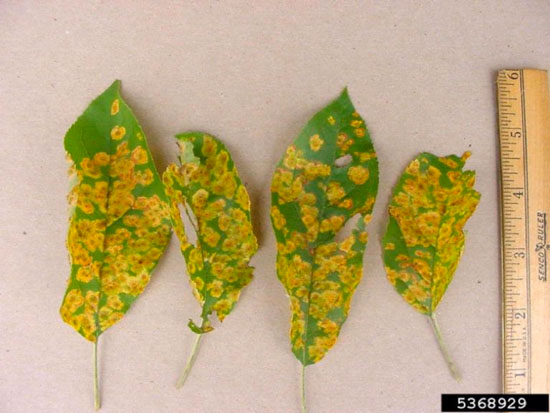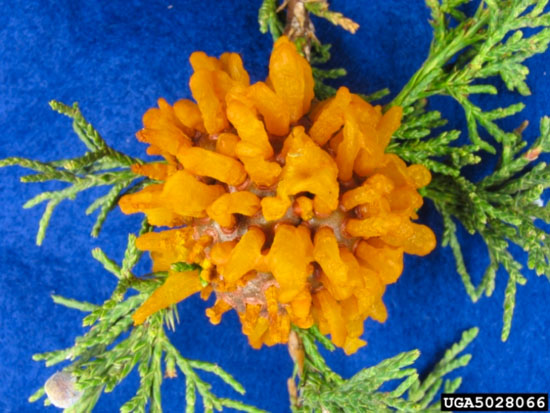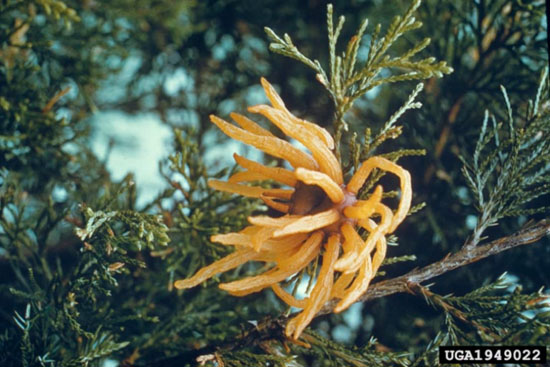Issue 11, July 2, 2012
Cedar-Apple Rust
Cedar rust comes in three different forms and can infect apple, hawthorn, and quince trees wherever cedars exist across the country. Cedar rust of apple is probably the most important of all apple rusts in the eastern United States. If a susceptible cultivar is grown, it will cause severe (almost total!) defoliation and a huge loss in crop quantity and fruit quality.

Cedar apple rust symptoms on apple leaves. (Paul Bachi, University of Kentucky Research and Education Center, Bugwood.org).
Cedar Apple Rust is most easily identified by the appearance of small yellow to orange lesions that will appear on the top of leaves, petioles, and even on young fruits. Depending on host susceptibility, these lesions can increase in size at varying rates, with faster enlargement on more susceptible cultivars. These lesions can occasionally be surrounded by a red band, but this is not the standard. After this, small brown pustules will develop that are no larger than 1mm in diameter. These will produce watery, orange drops. Next up (well, after several weeks) comes yellow brown lesions up to 15mm in diameter on the underside of leaves. From these, dark tubular structures are produced; these will release red brown spores.

Telial-stage horns of the cedar-apple rust pathogen on cedar. (Joseph O'Brien, USDA Forest Service, Bugwood.org Joseph O'Brien, USDA Forest Service, Bugwood.org)

Telia-producing gall (cedar apple) of Gymnosporangium juniperi-virginianae on the alternate host eastern red cedar (Juniperus virginiana). (E.F. Wicker, USDA, Bugwood.org)
As for management of this all too common pathogen, it is recommended as with nearly everything to plant a resistant cultivar. Resistant varieties have been developed for a very long time, and are easily available. If a rust resistant cultivar is chosen, it makes all other management techniques superfluous. There are, of course, many non-resistant cultivars planted around the country, and there are a number of management practices to help these as well. The easiest (or maybe just most successful) practice would be to remove all the galls from Eastern red cedar trees in the surrounding areas. This rust does not overwinter on any of the hosts mentioned in this article, and instead overwinters on nearby cedar. Midway through the growing season, the yellow orange spots release spores that will infect cedar to ensure the pathogens winter survival. The cedar galls are bright orange in color, and look like strange masses of jelly tendrils. These should be removed in early spring to prevent summer infection, and then removed once again in the three to four week blooming period. If a fungicide is deemed to be necessary it should be applied every seven to ten days from just before blooming until about three weeks after petals have dropped. (Stephanie Porter and Sean Mullahy)
Authors:
Stephanie Porter
Sean Mullahy